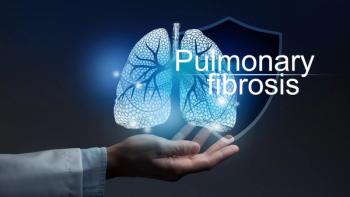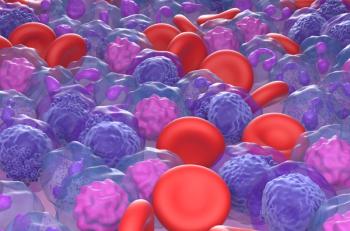
Sacubitril/Valsartan Safe, Effective for Patients With HFpEF Undergoing MHD
The efficacy and safety of sacubitril/valsartan, the angiotensin receptor neprilysin inhibitor, was investigated among a patient population who had heart failure with preserved ejection fraction (HFpEF) and currently receiving maintenance hemodialysis (MHD).
Overall improvement in cardiac function was seen following treatment with sacubitril/valsartan, as gauged by clinical outcomes and echocardiographic parameters, among 247 patients undergoing maintenance hemodialysis (MHD) who are also living with
Sacubitril is a neprilysin inhibitor and valsartan is an angiotensin II receptor blocker (ARB), and outcomes from the combination medication were determined for all patients included in this new analysis. These results were then compared among those who were receiving angiotensin converting enzyme (ACE) inhibitors/ARBs at time of study entry (n = 211) and those with no history of sacubitril/valsartan administration (n = 36). Primary outcomes were changes in clinical, biochemical, and echocardiographic parameters before and after sacubitril/valsartan treatment.
Findings from the retrospective study were published in
“HFpEF is a common comorbidity in patients with maintenance hemodialysis and results in substantial mortality and morbidity,” the study authors wrote. “Sacubitril/valsartan has been shown to significantly improve clinical outcomes and reverse myocardial remodeling among patients with heart failure with reduced ejection fraction (HFrEF). The effect of sacubitril/valsartan in MHD patients with HFpEF remains unclear.”
After treatment with sacubitril/valsartan, discernible decreases were seen in mean systolic (SBP) and diastolic blood pressures (DBP), heart rate, and median N-terminal B-type natriuretic peptide precursor (NT-proBNP) and cardiac troponin I compared with baseline:
- SBP: 149.7 (23.6) vs 137.2 (21.0) mm Hg (P < .001)
- DBP: 90.2 (16.1) vs 84.5 (14.1) mm Hg (P < .001)
- Heart rate: 83.5 (12.5) vs 80.0 (8.7) bpm (P < .001)
- NT-proBNP: 29,125 (11474.5-68,532.0) vs 12,561.3 (4035.0-37,575.0) pg/mL (P < .001)
- Cardiac troponin I: 0.044 (0.025-0.078) vs 0.0370 (0.020-0.064) mcg/L (P = .009)
Universal improvement was also seen among the 7 echocardiographic parameters evaluated before and after sacubitril/valsartan initiation (all P < .001):
- Left ventricular (LV) posterior wall thickness: 11.8 (2.0) vs 10.8 (1.9) mm
- Intraventricular septal thickness in diastole: 11.8 (2.0) vs 11.2 (2.0) mm
- LV end-diastolic diameter: 53.8 (6.9) vs 51.2 (7.1) mm
- Left atrial diameter: 40.5 (6.2) vs 37.2 (7.2) mm
- LV end-diastolic volume: 143.0 (111.5-174.0) vs 130.0 (105.0-163.0) mL
- LV end-systolic volume: 57.0 (43.0-82.5) vs 48.0 (38.0-74.0) mL
- Pulmonary arterial systolic pressure: 39.0 (30.5-50.0) vs 28.0 (21.0-37.5) mm Hg
Significant improvements were also seen for the following mean and median LV diastolic function parameters:
- E/A ratio: 0.8 (0.7-1.3) vs 0.9 (0.8-1.3) (P = .008)
- Maximal tricuspid regurgitation velocity: 2.7 (2.5-3.2) vs 2.4 (2.0-2.8) m/s (P < .001)
- Septal e’wave velocity: 8.0 (0.6) vs 8.2 (0.5) cm/s (P = .001)
- Lateral e’wave velocity: 9.9 (0.8) vs 10.2 (0.7) cm/s (P < .001)
- E/e’: 8.3 (6.4-11.8) vs 7.2 (6.1-8.9) (P < .001)
- Left atrial volume index: 37.9 (4.2) vs 36.4 (4.1) mL/m2 (P < .001)
The most common comorbidity among all patients was hypertension in 100%, followed by diabetes in 36% and dyslipidemia in 32.3%. In addition to ACE inhibitor/ARB use reported by 85.4%, calcium channel blockers and beta-blockers were reported by 86.2% and 74.9%, respectively.
New York Heart Association functional class was also evaluated, and by the end of the study, more patients had class I disease (44.5% ) vs class II (33.2%) or III (22%) disease. At baseline, these totals were 0%, 52.6%, and 47.4%, respectively.
When the subanalysis was conducted between ACE inhibitor–/ARB-experienced patients and sacubitril/valsartan-naïve patients, outcomes were clearly in favor of the latter. SBP, DBP, and heart rate, which were lower (SBP and DBP) or equivalent (heart rate) in this group at baseline, were lower by the end of the follow-up:
- SBP: 147 (22.0) and 136.9 (24.2) mm Hg, respectively, vs 150.0 (23.9) and 137.2 (20.2) mm Hg
- DBP: 87.3 (14.5) and 82.9 (11.8) mm Hg vs 90.7 (16.3) and 84.8 (14.5) mm Hg
- Heart rate: 83.7 (14.1) and 78.5 (8.2) bpm vs 83.4 (12.1) vs 80.4 (8.8) bpm
"To the best of our knowledge, this is the first report on the treatment of sacubitril/valsartan in MHD patients with HFpEF,” the study authors wrote. “The aim of the treatment of MHD with HFpEF is to preserve residual renal function and reduce cardiovascular events.”
They note of the clinical implications of their findings: They echo findings from PARAGON-HF and could serve as a jumping-off point for patients undergoing MHD who have comorbid
Reference
Guo Y, Ren M, Wang T, et al. Effects of sacubitril/valsartan in ESRD patients undergoing hemodialysis with HFpEF. Front Cardiovasc Med. Published online November 9, 2022. doi:10.3389/fcvm.2022.955780
Newsletter
Stay ahead of policy, cost, and value—subscribe to AJMC for expert insights at the intersection of clinical care and health economics.













































